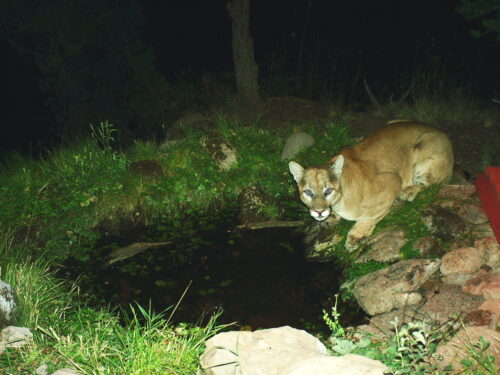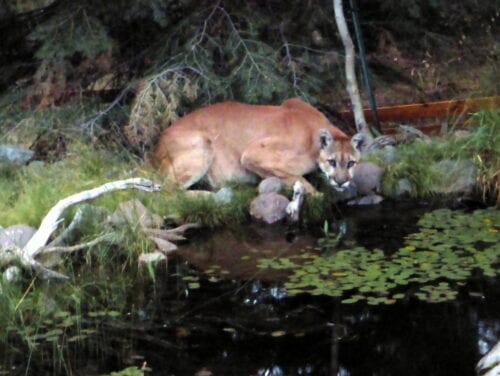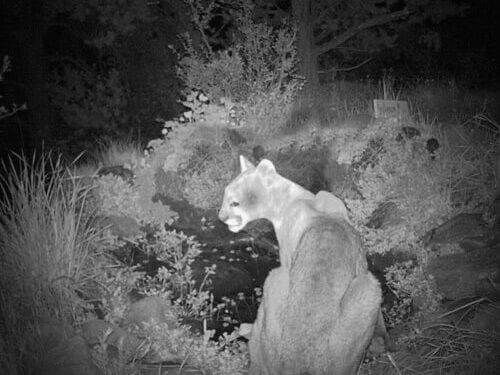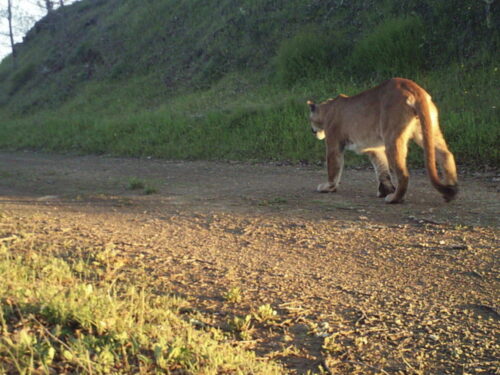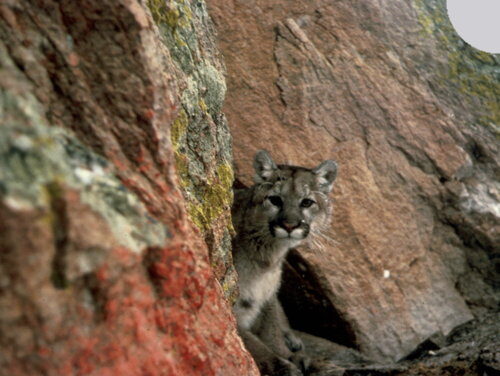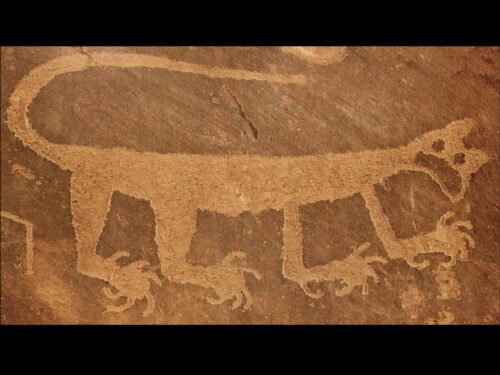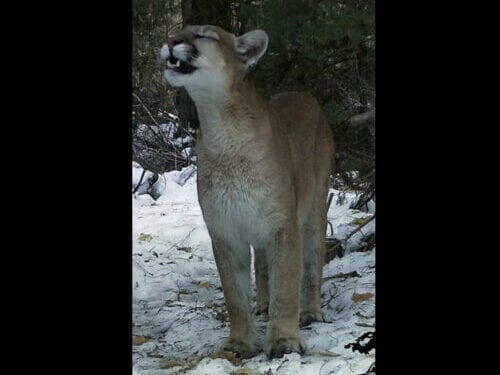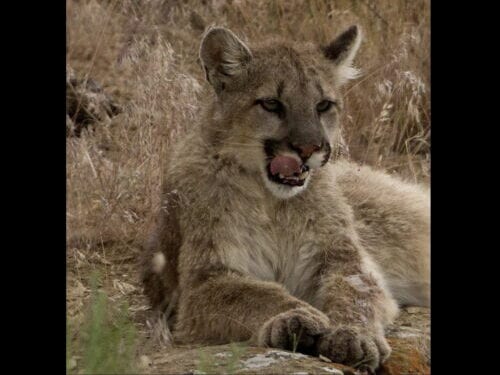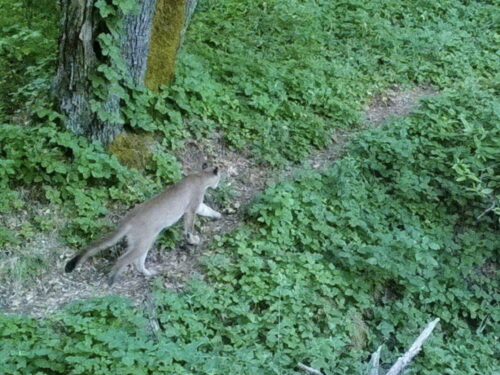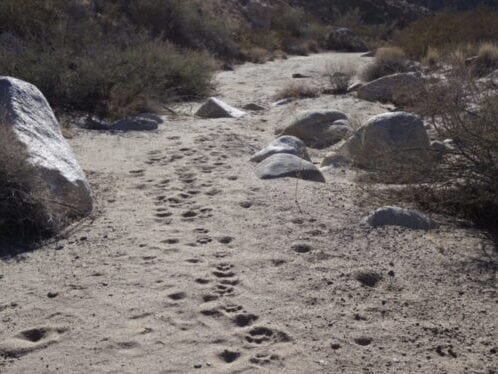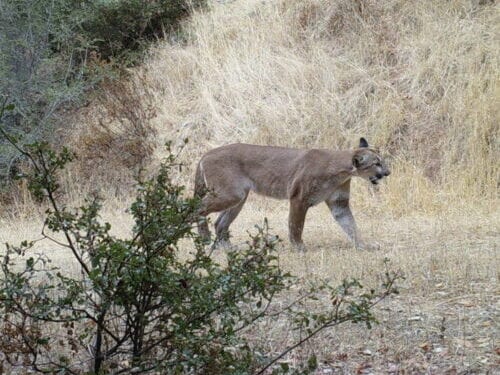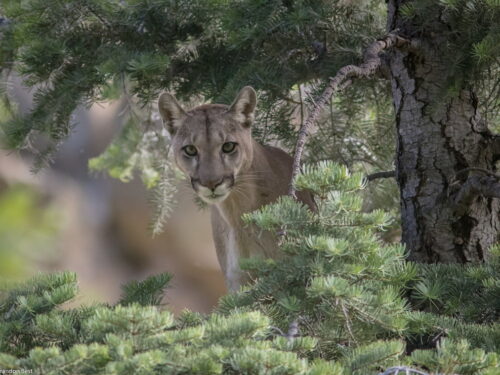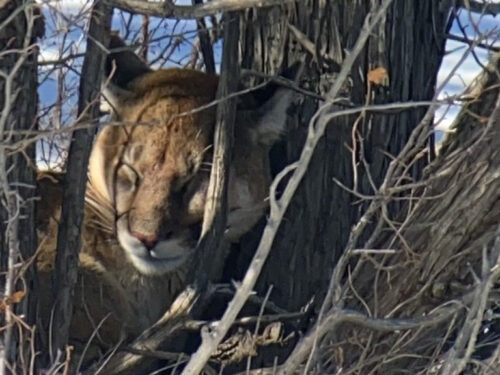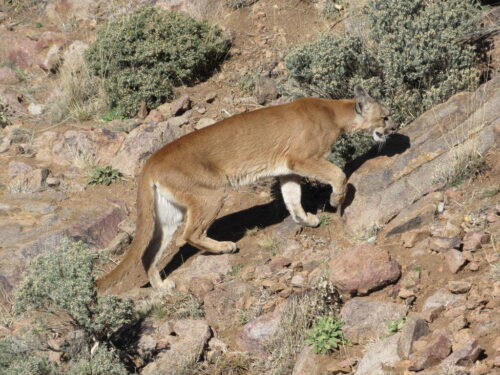Mountain Lion
Scientific Name: Puma concolor
Type: Mammal
Family: Felidae (Cat)
Size: 6.7 to 7.9 feet long
Weight: 100 to 125 pounds
Life Span: 8 to 13 years\
Range and Habitat
Historically, mountain lions were the most widely distributed land mammal in the Western hemisphere, ranging widely throughout North and South America. However, hunting, extermination efforts, and destruction of habitat has left only isolated populations in relatively unpopulated areas. In the US, this includes the 14 most western states.
Mountain lions can live at a wide range of elevations and habitat types including deserts, coastal forests, arid hillsides, scrub and oak woodlands, and mountain tops. In addition, they are slowly invading more urban areas. They prefer areas with dense undergrowth that provides cover for hunting.
Diet
Mountain lions primarily seek out deer, but they are opportunistic hunters and will also eat raccoons, birds, small mammals, foxes, mice, and even porcupines.
Typically, a mountain lion will kill a deer about once a week, feed on it, and then cover the carcass with leaves and sticks to protect it from other animals. The mountain lion will then revisit the site over a period of several days to eat more.
Behavior and Social Life
Mountain lions are secretive animals. They potentially have distinct summer and winter ranges in areas with a cold climate. They travel large distances each night hunting. Mountain lions silently stalk their prey and lay in wait for the right moment to strike. They use their claws to grab their prey and deliver a powerful, killing bite to the neck.
Mountain lions are highly territorial. They use urine and feces, often scraping the dirt nearby, to mark their home territory. In addition, mountain lions may leave deep scratches known as claw raking on fallen trees as a sign of their presence. They make their dens in rocky ledges, dense thickets and under uprooted trees.
Mountain lions make very little noise but are capable of making a variety of sounds including low-pitched hisses, growls, purrs, yowls, and screams under different circumstances.
Mountain lions are rarely seen or heard by humans, rather their tracks and scent marking are often the only visible signs that mountain lions are about.
On Trail During Day
Roaming at Night
Growling
Title
Tracks
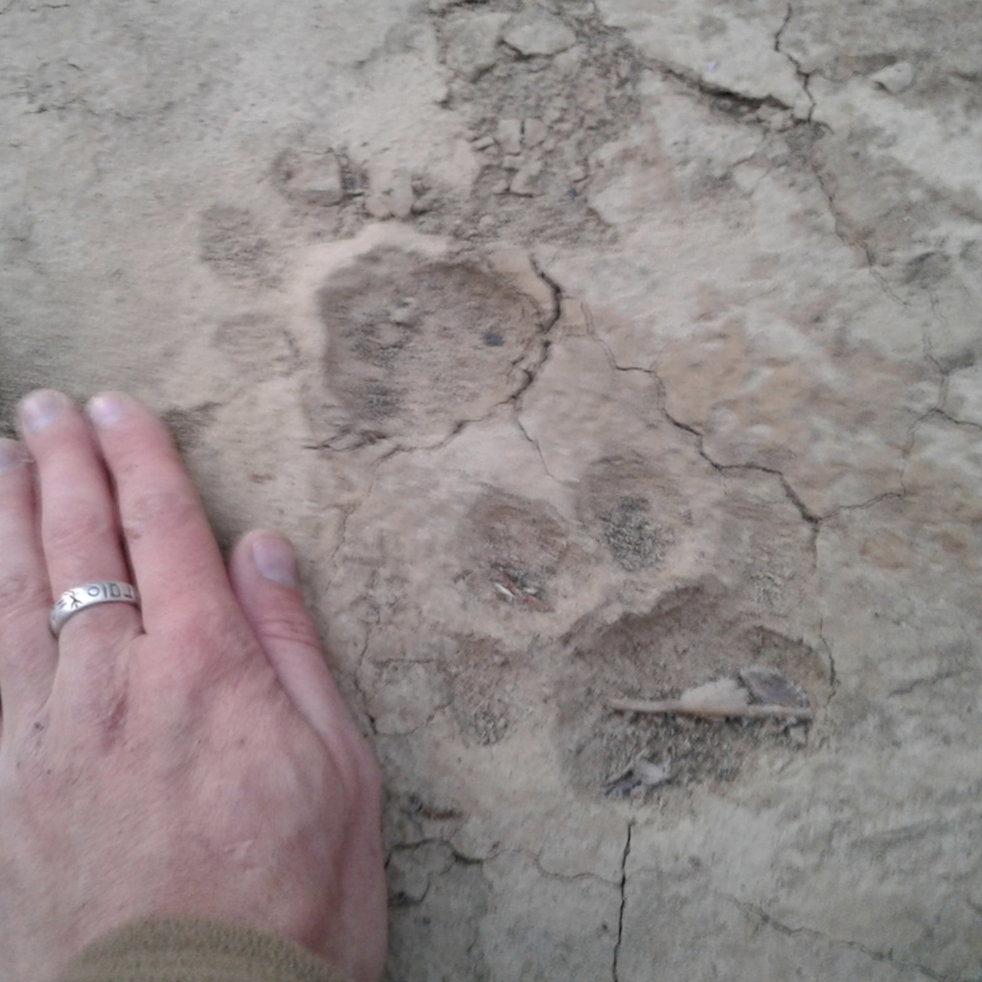
Claw Marks

Food Cache

Life Cycle
Mountain lions remain solitary except during mating. There is no fixed mating season but typically cubs are born any time from late winter to early spring. Most litters consist of 2 to 4 kittens. A young baby mountain lion has spots and blue eyes for about a year after birth. The kittens may remain with their mother for up to two years.
Ecological Role
Mountain lions are important as top predators and are often the apex predator in the specific ecosystem in which they live. In particular, they are crucial in controlling the population of large ungulates, such as mule deer and elk.
Since mountain lions mostly eat herbivores, they unintentionally eat a large number of seeds which can be spread in their scat. This is estimated to result in the planting of 90,000 plants per year.
Interactions With Humans
Mountain lions only rarely encounter humans, and the odds of them attacking are infinitely small. However, if a mountain lion is seen, one should stop, try to look big and make noise to drive the mountain lion away.
Mountain lions are valued as trophies and are thus are hunted in many areas including New Mexico.
Interesting Facts
- The mountain lion is known by 40 different names in English, the most popular alternative names are cougar, puma, or panther.
- One of the more unusual names for a “mountain lion” is “ghost cat”.
- Mountain lions can jump 15 high and 40 feet in distance.
- They can sprint up to 50 miles/hour.
- Mountain lions are good climbers, being able to scale a 12 foot fence and escape danger by climbing up a tree.
- Mountain lions are good swimmers but prefer to avoid the water.
- Male and female mountain lions look alike but the males are 30 to 40% larger than the females.
- The legs of the mountain lion are the largest proportionately of any in the cat family.
- They are the fourth heaviest cat in the world.
- A mountain lion’s tail is approximately 33 inches long.
- Mountain lions have large paws, measuring approximately 3 inches across.
- Mountain lions have adapted to being able to see well at night.
- Males have ranges of roughly 100 square miles; female ranges are about 50 square miles.
- Mountain lions prefer to eat wild game over domestic animals.
- The US population of mountain lions is estimated to be no more than 30,000.

